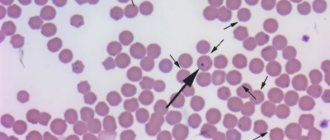Brucellosis (PCR)
The causative agent of canine brucellosis is Brucella canis, a small gram-negative, non-spore-forming coccobacilli. In rare cases, canine brucellosis can be caused by Brucella abortus, Brucella melitensis and Brucella suis.
Among sexually transmitted infections in dogs, brucellosis is of greatest veterinary importance. Brucella canis causes infertility in males and females. Screening tests for B. canis infection are an important part of the evaluation of dogs before use for breeding.
Testing for brucellosis should be carried out in cases of abortion, orchitis, epididymitis and infertility. Infection is possible in castrated bitches and bitches that have not been bred. B. canis infection can also present as a systemic disease (eg, discospondylitis). The disease usually affects dogs of medium and large breeds weighing from 14 to 64 kg, aged from one to eight years. Transmission of B. canis infection occurs through contact with biological fluids of sick individuals containing a sufficient number of bacteria (2 × 10 6 CFU), semen, lochia, aborted fetuses/placenta and urine.
The main routes of transmission are oral and nasal, the secondary route is sexual (through mucous membranes). Airborne transmission is especially important in kennels where dogs are kept in crowded conditions. Transplacental and percutaneous transmission of infection is also possible. Although transmission through care products is possible under certain conditions, B. canis is not resistant to environmental factors and is quickly inactivated by standard disinfectants containing quaternary ammonium, 1% sodium hypochlorite, 70% ethanol, iodine solutions, and glutaraldehyde.
The natural reservoirs of B. canis are members of the canine family. Canine brucellosis usually occurs in the form of outbreaks in large kennels, rarely in dogs of private owners.
Brucella are able to attach and penetrate through mucous membranes, after which they divide in regional lymph nodes. Bacteremia is observed within 7-30 days after infection, with the pathogen spreading into the cells of the reticuloendothelial system, prostate gland, uterus and placenta. B. canis has an affinity for steroid-dependent tissues of the reproductive system. Sometimes Brucella can survive and multiply in monocytes and macrophages of the reticuloendothelial system due to inhibition of the myeloperoxidase bactericidal system. In the early stages of infection, polymorphonuclear cells destroy B. canis with relatively little efficiency. Brucella is found in the endoplasmic reticulum of trophoblast cells in infected pregnant bitches. Fetal death occurs as a result of severe necrotizing placentitis, coagulating necrosis of the chorionic villi and necrotizing arteritis. Brucella is found in the gastric contents of aborted fetuses. Necrotizing vasculitis and granulomatous inflammation cause pathologies of the testes, testicular appendages and prostate gland.
Brucellosis in dogs is characterized by severe complications with a low mortality rate.
Clinical manifestations of brucellosis are usually mild and include decreased performance, lumbar pain, lameness, weight loss and lethargy.
The main sign of brucellosis in pregnant bitches is the death of fetuses, which can be observed in the early stages of pregnancy (20th day), with resorption of the fetuses occurring, or more often (75% of cases) in later stages - up to the 59th day, while abortions are observed. Bitches who experience fetal death early in pregnancy may be misdiagnosed as infertile if ultrasound has not previously been performed to confirm pregnancy.
In male dogs with brucellosis, the processes of maturation, transport and storage of sperm are disrupted. Epididymitis, orchitis, and decreased sperm quality are common. In chronic cases, testicular atrophy and infertility develop. Brucella is found in the prostate gland and urethra and is periodically excreted in the urine. The formation of antibodies to sperm also plays a role in the development of infertility. Pyospermia may occur 3-4 months after infection. In chronic infections, uveitis or endophthalmitis, lymphadenitis, splenomegaly, or discospondylitis may occur in dogs of both sexes; in some cases - dermatitis and meningoencephalitis. Bacteremia may persist for several years, and dogs with subclinical disease remain sources of infection for a long time.
A significant amount of Brucella is found in vaginal discharge for 4-6 weeks after an abortion. In male dogs, the highest concentration of microorganisms in semen is observed 2-3 months after infection; over the next few years, the concentration decreases. Brucella can be detected in urine for several months or years, more often in male dogs. It is also possible to isolate Brucella in milk. Sometimes spontaneous recovery can occur within 1-5 years, but it is quite difficult to accurately establish the fact of elimination of the pathogen. Bitches treated with antimicrobial drugs can produce normal offspring after multiple abortions, while remaining a source of infection.
The diagnosis of canine brucellosis is made based on clinical symptoms, results of serological testing, bacteriological culture of blood, urine and tissue samples, histopathological examination and PCR. Since no intravital diagnostic method is 100% sensitive, and serological testing methods lack specificity, it is usually necessary to take into account the results of a number of studies to make a diagnosis. If there are several dogs with infertility in the nursery, it is necessary to conduct a serological study and bacteriological culture of blood samples from as many dogs as possible to increase the accuracy of the diagnosis.
PCR is used to detect B. canis in the semen of culture-negative dogs; this method is probably one of the most sensitive when examining breeding animals. Aqueous humor samples from dogs with endophthalmitis and aspirates from lymph nodes are also used for PCR. There are PCR test systems that allow you to differentiate Brucella species. Real-time PCR has been used to detect B. canis in tissue, urine, buffy coat, and intervertebral disc tissue samples from dogs with discospondylitis.
Preanalytics:
1. With one hand, carefully spread the labia of the bitch’s vulva apart, and with the other hand take a sterile urogenital probe. 2. The probe is inserted strictly along the dorsal wall of the vagina (to avoid getting into the clitoral fossa) for about 5 cm. 3. Using rotational movements, take the cellular material. 4. Transfer the probe into a 2 ml microtube with transport medium, “sweep” the biomaterial into the liquid with rotational movements, and dispose of the probe. 5. Close the microtube tightly with the lid until it clicks. 6. Label the microtube with your full name. owner and name of the animal. 7. Fill out the referral form, indicating the client code. 8. Temperature regime for transportation to the laboratory +2℃…+8℃ (blue package)
Interpretation of results: The results of the study contain information for physicians only. The diagnosis is made based on a comprehensive assessment of various indicators, additional information and depends on diagnostic methods.
Units of measurement: qualitative test. The result is given in terms of “detected” or “not detected”.
"Detected":
In the analyzed sample of biological material, a DNA fragment specific for Brucella canis was found, infection with Brucella canis lato.
"Not detected":
no DNA fragments specific to Brucella canis lato were found in the analyzed sample of biological material, or the concentration of the pathogen in the sample is below the sensitivity limit of the method.
Brucellosis (Maltese fever, Mediterranean fever, Gibraltar fever, Cyprus fever, undulating fever, typhomalarial fever, Bang's disease) is an infectious disease from the group of bacterial zoonoses, the causative agent of which is microorganisms of the genus Brucella. Pathogenic for humans are B. melitensis, Br. abortus, Br. suis. Human infection occurs mainly through nutritional means, less often through contact or aerogenous routes. It is a systemic infectious-allergic disease with a tendency to chronic relapsing course with primary damage to the musculoskeletal, nervous and genitourinary systems of the body. Depending on the clinical picture, acute, subacute, chronic and residual forms of brucellosis are distinguished. The most sensitive currently is the enzyme-linked immunosorbent assay (ELISA), which is recommended as an express method for mass examinations.
Synonyms Russian
Antibodies to brucellosis.
Research method
Enzyme-linked immunosorbent assay (ELISA).
What biomaterial can be used for research?
Venous blood.
How to properly prepare for research?
- Do not eat for 2-3 hours before the test; you can drink clean still water.
- Do not smoke for 30 minutes before the test.
General information about the study
Brucellosis is a zoonotic infection characterized by multiple organ damage and a tendency to become chronic. A significant pathogenetic component of brucellosis is allergic reactivity. Transmission of Brucella occurs mainly through food and water, most often through the milk and meat of infected animals. Among cattle breeders, airborne and contact transmission of brucellosis can occur. The diagnosis is established by identifying the pathogen in the blood, lymph node puncture or cerebrospinal fluid.
The disease is caused by non-motile polymorphic gram-positive microorganisms of the genus Brucella. The type of Brucella causing the infection influences the severity of the course; the most severe course of brucellosis is caused by infection with Brucella melitensis. Brucella are highly invasive, multiplying inside the cells of the host body, but are able to remain active outside the cell. They are stable in the environment, persisting in water for more than two months, three months in raw meat (30 days in salted meat), about two months in feta cheese and up to four months in animal wool. Boiling is detrimental to Brucella; heating to 60 °C kills them in 30 minutes.
The reservoir of brucellosis is animals; the source of infection for humans is mainly goats, sheep, cows and pigs. In some cases, transmission from horses, camels, and some other animals is possible. The pathogen is excreted by sick animals in feces (feces, urine), milk, and amniotic fluid. Transmission of the infection is carried out predominantly by the fecal-oral mechanism, most often by food and water, in some cases it is possible to implement contact-household (when the pathogen is introduced through microtraumas of the skin and mucous membranes) and aerogenic (by inhaling infected dust) routes.
A significant epidemiological danger is posed by milk obtained from sick animals, and dairy products (cheese cheese, kumiss, cheeses), meat, and products made from animal raw materials (wool, leather). Animals contaminate soil, water, and feed with feces, which can also contribute to human infection through non-food routes. Contact-household and airborne dust paths are realized when caring for animals and processing animal raw materials.
With brucellosis in pregnant women, there is a possibility of intrauterine transmission of the infection, in addition, postnatal transmission during lactation is possible. People are highly susceptible to brucellosis; after infection, immunity remains for 6-9 months. Re-infection with Brucella occurs in 2-7% of cases.
The incubation period of brucellosis is on average 1-4 weeks, but with the formation of latent carriage it extends to 2-3 months. Acute brucellosis usually develops quickly; in elderly people, the onset can be gradual (in this case, patients note prodromal phenomena in the form of general malaise, insomnia, weakness, arthralgia and myalgia with a gradual increase in intoxication over several days). Body temperature rises sharply, severe chills alternate with sweat, intoxication develops, most often moderate, despite the pronounced temperature reaction.
Chronic brucellosis occurs in waves, with the manifestation of symptoms of multiple organ lesions. In this case, the symptoms of general infectious intoxication are usually moderate, the temperature rarely exceeds subfebrile values. The intervals between exacerbations of the disease can last 1-2 months. If a new infectious focus forms inside the body, the general condition worsens. The symptoms of chronic brucellosis depend on the predominant damage to one or another functional system by the pathogen and the severity of the allergic component.
Determining Brucella antigens and antibodies to them in the patient’s blood using serological methods is sufficient to confirm the diagnosis. Blood serum is usually tested, but antigens can also be detected in the cerebrospinal fluid. A positive result of a serological study in at least 3-4 different tests, with characteristic corresponding dynamics of indicators, is a sufficient basis to confirm the etiology of the disease. Starting from the 20-25th day of illness and for a long period (several years) after recovery, a positive reaction to the Burnet skin test (subcutaneous injection of brucellin) is noted.
Serological methods may also be useful in differentiating between acute and chronic forms of brucellosis. For this purpose, determination of individual classes of immunoglobulins can be performed.
What is the research used for?
- To detect infection (acute and chronic).
When is the study scheduled?
- For symptoms of brucellosis (acute septic form): high temperature 39-40 °C and above, chills, sweating, weakness, myalgia, arthralgia, arthritis;
- when examining patients with isolated lesions of the genitourinary system and joints with a history of indications for the consumption of raw goat milk, especially in areas endemic for brucellosis, and professional characteristics (veterinarians, dairy and meat industry workers);
- during an epidemiological survey of the population and during the selection of persons for vaccination against brucellosis infection;
- differential diagnosis with influenza, typhoid fever, malaria, infectious mononucleosis, leptospirosis, lymphogranulomatosis, rheumatoid polyarthritis.
What do the results mean?
Reference values: no antibodies detected.
Positivity rate (PF):
0.9 – 1.0 – questionable result (gray zone);
> 1.1 – positive result (antibodies detected).
CP is the concentration of specific antibodies per unit volume. The higher the CP of the sample, the higher the concentration of antibodies.
Negative/doubtful result:
- absence of infection;
- weak immune response of the patient;
- low level of antibodies.
Positive result:
- acute infection;
- relapse of the disease;
- chronic form of infection.
If a questionable result is obtained, it is recommended to repeat the study after 10-14 days. If the result is “Doubtful”, the result should be considered negative.
In case of infection with the Brucella bacterium, IgM antibodies appear first, then after some time IgG antibodies. The diagnosis of “acute brucellosis” is confirmed by the detection of antibodies during acute symptoms of the disease, the joint detection of IgG, IgA, IgM or only IgM antibodies. If treatment has been applied, the IgG concentration usually decreases significantly within 2-4 months.
In the case of chronic brucellosis, IgG and IgA antibodies are of particular importance. They also indicate a long-term infection.
The presence of IgA, IgG in the absence of IgM indicates a chronic infection or reinfection with Brucella.











